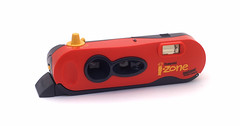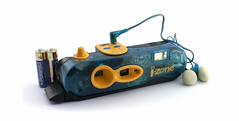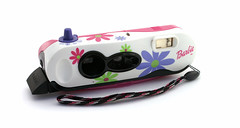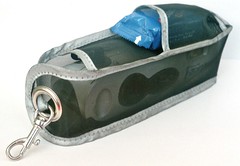Difference between revisions of "Polaroid I-Zone"
Hanskerensky (talk | contribs) m |
Hanskerensky (talk | contribs) m |
||
| Line 18: | Line 18: | ||
<div class="plainlinks" align=center> | <div class="plainlinks" align=center> | ||
{| | {| | ||
| − | ||[http://www.flickr.com/photos/89864432@N00/2217369368/in/pool- | + | ||[http://www.flickr.com/photos/89864432@N00/2217369368/in/pool-camerawiki/ http://farm3.static.flickr.com/2228/2217369368_249c9f5b6a_m.jpg] |
|} | |} | ||
</div>{{br}} | </div>{{br}} | ||
Revision as of 09:11, 25 June 2011
The i-Zone was first released by Polaroid in 1999, and a new format of Polaroid film was released alongside these cameras which produces a print measuring 24mm×36mm (the same size as a 35mm film negative). I-Zone (or 'Pocket') film is an integral film (such as SX-70 or 600) but the film pack contains no battery, therefore the prints must be manually pulled from the camera in a similar way to the old Packfilm cameras.
The i-Zone was a fixed focus, fixed shutter speed camera with selectable apertures for different shooting conditions. Like many recent consumer Polaroid cameras the flash fires for every shutter release, and cannot be disabled. I-Zone cameras were marketed towards children, with various stylings and revisions over their lifespan. I-Zone film came in a couple of varieties (notably a sticker-backed version that revealed hidden messages on the print as it developed) and the cameras seem to have been designed primarily for portraiture, with the fixed focal distance covering a range between 2 and 8 feet.
Links
In French:
- I-Zone blue on www.collection-appareils.com by Sylvain Halgand
- I-Zone on www.collection-appareils.com by Sylvain Halgand
- I-Zone Barbie on www.collection-appareils.com by Sylvain Halgand
- I-Zone Bug Bunny on www.collection-appareils.com by Sylvain Halgand





